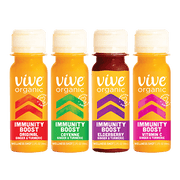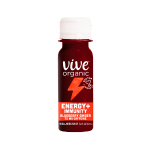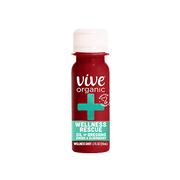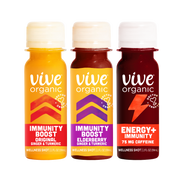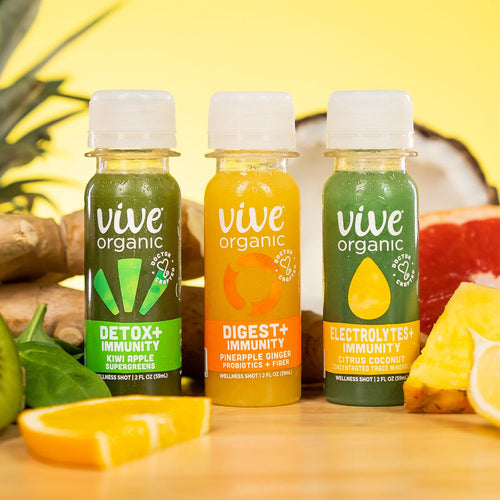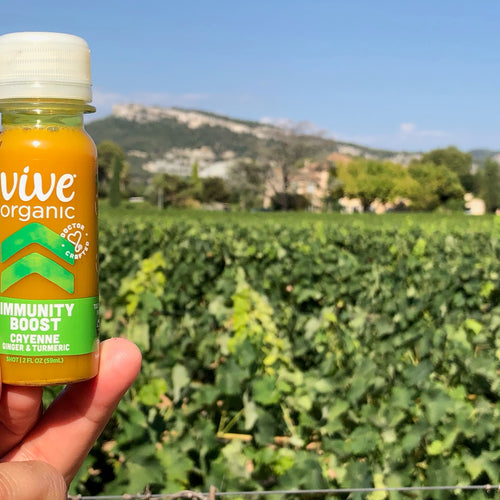If you are looking for ways to ensure you have an optimal intake of natural electrolytes in your diet, then you will want to read ahead to see what foods are good sources of these minerals. Since electrolytes play an integral role in hydration, you will learn how they support fluid balance as well as support your essential day-to-day cellular and overall health.
What Are Electrolytes?
Electrolytes are minerals that the body requires on a daily basis to perform essential functions. These electrolytes include sodium, potassium, chloride, phosphorus, calcium, and magnesium.
Many of our food sources contain minerals, which are known as natural electrolytes. These same essential minerals (sodium, potassium, chloride, phosphorus, calcium, and magnesium) are also naturally present in whole foods. A sufficient amount of electrolytes is provided by most diets that include a range of foods from each of the food groups.1
Remember that 60% of our body is made of water, so electrolytes are present in the majority of our body's cells and fluids.2 It is therefore very important to make sure that fluids lost through sweating are replaced daily.
Now, let's examine the functions of each of these electrolytes in more detail and see what foods naturally contain electrolytes.
Functions of Electrolytes and Some Science Fun
All electrolytes and water play an integral role in maintaining optimal hydration. They also manage the proper fluid balance for us. In fact, the total amount of water in our body is found in sections among the cells with approximately 65% found within the cells (intracellular) and the remaining 35% is found outside of the cells.3
When electrolyte levels fluctuate, the body's water adjusts. For example, if the cell is overly concentrated, water will enter the cell; if there are insufficient electrolytes in the cell, water will exit. This ensures an excellent check and balance.
As you may recall, electrolytes have a natural positive or negative charge and help to keep your muscles, nerves, and even your brain in good working order. They also keep track of your body's acid-base balance (pH) to ensure everything is working properly.
Let's look at these supercharged electrolytes and see how they work!
Sodium
Sodium (Na+) helps to provide support for fluid volume in the body. It is a key electrolyte that helps to regulate fluid balance and works very closely with potassium to ensure the electrolytes and water are in the right ratio.
Sodium’s role is also to assist with the contraction of our muscles, regulate our blood pressure, and help with sending nerve messages to other parts of the body.4
Potassium
Have you ever had those uncomfortable leg cramps right before bedtime or even after working out? That's your body telling you that you might need more potassium and water! Potassium (K+) is a powerful mineral that helps our muscles and nervous system function properly.
You see, muscles are triggered to contract when they receive a message (an electrical impulse) from our nerves and potassium is the electrolyte that orchestrates this. All muscles, including our heart, are affected by potassium, causing them to contract and function properly.5
Furthermore, potassium plays a significant role as an electrolyte in maintaining a positive fluid balance.5
Chloride
Another impressive electrolyte that supports necessary functions behind the scenes is chloride (Cl-). Chloride as you recall is part of the equation for table salt and is a common source of chloride in our diets. When table salt (NaCl) dissolves, it separates into sodium ions (charged particles) (Na+) and chloride ions (Cl-).
Chloride helps to control the amount of fluid and nutrients that enter and exit the cells. Additionally, it keeps pH levels in check, increases stomach acid production to help aid in digestion, activates nerve and muscle cells, and makes it easier for cells to exchange carbon dioxide and oxygen.6
Phosphorus
Phosphorus is found in bones, teeth, DNA, and RNA, as well as in cell membrane structure. It, like many of the other electrolytes, works to maintain pH levels in cellular fluids and assist in nerve conduction.7
Magnesium
Magnesium (Mg+) is an electrolyte that is involved in many metabolic processes in the body such as the contraction of skeletal muscles, the relaxation of the smooth muscles, and the excitation of brain neurons. The body uses magnesium as part of a wide range of enzyme-related processes.
Magnesium is provided through our diet. Our body does a fantastic job in keeping an eye on our magnesium levels. The body will not absorb magnesium if there's an excess in the body. Nevertheless, if there is not enough, the body will tell the intestine to absorb more to ensure balance.8
Calcium
When you think of calcium (Ca++), you probably think of bone and muscle health, which is absolutely correct. Calcium helps to maintain healthy bones and teeth, as well as muscle strength and contraction. It also helps regulate normal heart rhythm and aids in the body's blood clotting process.
Foods Rich in Natural Electrolytes
Healthy eating and getting enough fluids are the best ways to achieve and maintain electrolyte balance and adequate hydration. Below are some foods that provide natural electrolytes:
Sodium: Dairy products like milk, cheese, dry roasted nuts and seeds, pickled foods like sauerkraut or pickles.4
Potassium: Oranges, orange juice, avocados, bananas, prunes, raisins, sweet potatoes, apricots, cantaloupe, spinach, broccoli, tomatoes, soybeans, peanut butter, flax seeds, whole wheat bread, black brewed tea, chicken, and turkey.9
Chloride: Table salt, seaweed, rye, fruits like apples, melons, berries, bananas, vegetables like lettuce, tomatoes, olives, celery, and also red meat like beef.10
Phosphorus: This natural electrolyte is quite abundant in a variety of foods such as beef, poultry (like chicken and turkey), fish, and liver. Eggs, milk, cottage cheese, yogurt, navy, kidney, soy, pinto, and garbanzo beans, grains like wheat germ and bran, salmon, and scallops too.7
Magnesium: Pumpkin seeds, chia seeds, almonds, cashews, peanuts, peanut butter, milk, yogurt, soy milk, avocado, spinach, broccoli, baked potatoes, edamame, black beans, and whole grains, salmon, beef, and chicken. Magnesium is also added to some breakfast cereals and other fortified foods.11
Calcium: Dairy sources include milk, cheese, and yogurt, fortified dairy alternatives, and non-dairy sources include canned sardines and salmon with bones. Vegetables, such as kale, broccoli, and Chinese cabbage (Bok choi).12
Simply Stating
- Many foods contain natural electrolytes, including avocados, nuts, seeds, legumes, and more. By eating a well-rounded diet that includes servings from each food group, you can meet your electrolyte requirements while also getting a boost of vitamins, antioxidants, fiber, protein, and even some essential fatty acids.
- To stay hydrated, drink plenty of fluids throughout the day, such as water, organic pressed juices, milk, and plant-based milks. Remember to drink throughout the day, not just when you're thirsty, as this could indicate that you're not getting enough fluids.
- If you have further questions about certain minerals or how much fluid you should consume daily, or if you are on a specific diet that has been prescribed for you, then be sure to reach out to your healthcare practitioner to have a candid chat to see what is right for you.
- Continue to make positive choices that support your overall well-being.
Disclaimer: This blog contains promotional content about our products. The information provided in this blog is for educational and informational purposes only and should not be construed as medical advice. While the nutritional information and health tips shared here are based on published studies and expert insights, they should not replace advice and treatment from a healthcare professional. Always consult a qualified healthcare provider with any questions you may have regarding a medical condition or health objectives.
References
- Shrimanker, Isha, and Sandeep Bhattarai. “Electrolytes.” StatPearls - NCBI Bookshelf, 24 July 2023, www.ncbi.nlm.nih.gov/books/NBK541123.
- Cleveland Clinic Medical. “Electrolytes.” Cleveland Clinic, my.clevelandclinic.org/health/diagnostics/21790-electrolytes. Accessed 8 July 2024.
- Wright, KC, MS, RDN. “Electrolytes’ Role in Optimal Hydration.” Today’s Dietitian Magazine, www.todaysdietitian.com/newarchives/0421p28.shtml. Accessed 8 July 2024.
- WebMD Editorial Contributor. “Foods High in Electrolytes.” WebMD, 23 Jan. 2024, www.webmd.com/diet/foods-high-in-electrolytes. Accessed 8 July 2024.
- Zacchia, Miriam et al. “Potassium: From Physiology to Clinical Implications.” Kidney Diseases (Basel, Switzerland) vol. 2,2 (2016): 72-9. doi:10.1159/000446268.
- “Chloride.” The Nutrition Source, 9 May 2024, https://nutritionsource.hsph.harvard.edu/chloride/#:~:text=Chloride%20is%20a%20mineral%20naturally%20found%20in%20various,nutrients%20going%20in%20and%20out%20of%20the%20cells. Accessed 8 July 2024.
- Office of Dietary Supplements - Phosphorus. ods.od.nih.gov/factsheets/Phosphorus-HealthProfessional. Accessed 8 July 2024.
- Faaem, Benjamin Wedro Md, Facep. “What Are Electrolytes? Function, Deficiency, Definition.” eMedicineHealth, 27 Jan. 2022, http://www.emedicinehealth.com/electrolytes/article_em.htm. Accessed 8 July 2024.
- Office of Dietary Supplements - Potassium. ods.od.nih.gov/factsheets/Potassium-HealthProfessional. Accessed 8 July 2024.
- Raut, Satish K et al. “Chloride ions in health and disease.” Bioscience Reports vol. 44,5 (2024): BSR20240029. doi:10.1042/BSR20240029.
- Office of Dietary Supplements - Magnesium. ods.od.nih.gov/factsheets/Magnesium-HealthProfessional. Accessed 8 July 2024.
- Office of Dietary Supplements - Calcium. ods.od.nih.gov/factsheets/Calcium-HealthProfessional. Accessed 8 July 2024.
